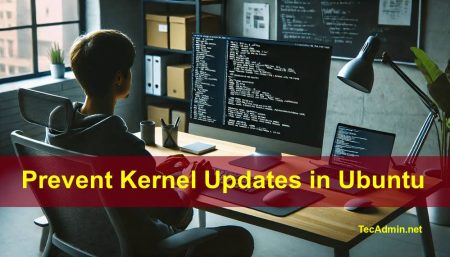A Linux system, like any other operating system, generates temporary files that can accumulate over time. While these files are useful for various purposes, they can take up valuable storage space and even slow down your system. Therefore, regular removal of these files is essential for optimal system performance. In this guide, we will explore various methods to remove temporary files safely and automatically, ensuring your Linux system remains clean and clutter-free.
1. Understanding Temporary Files
Temporary files, also known as temp files, are created by applications and the operating system for various reasons. These include:
- Storing data temporarily while running an application.
- Acting as a cache to speed up operations.
- Saving backups or intermediate versions of documents.
Typically, these files are deleted automatically when the application closes or the system is rebooted. However, some temporary files might remain, leading to clutter and wasted space. It is essential to identify and remove these files to maintain a clean system.
2. Locating Temporary Files
Temporary files are generally stored in a few specific locations on a Linux system:
- /tmp: This directory is used for storing system-wide temporary files.
- /var/tmp: Stores temporary files that need to persist across reboots.
- ~/.cache: This hidden directory in a user’s home folder contains user-specific cache files.
3. Manual Removal of Temporary Files
Before automating the process, it’s essential to understand how to manually remove temporary files. Use the following commands carefully:
- Clearing /tmp directory: Use the ‘find’ command with ‘-mtime’ option to remove files older than a specific number of days (replace ‘X’ with the desired number of days).
sudo find /tmp -type f -mtime +X -exec rm -f {} \; - Clearing /var/tmp directory: Similar to the /tmp directory, use the ‘find’ command with ‘-mtime’ option.
sudo find /var/tmp -type f -mtime +X -exec rm -f {} \; - Clearing user cache: Replace ‘USERNAME’ with the actual username.
rm -rf /home/USERNAME/.cache/*
4. Automating the Removal of Temporary Files
To automate the process, you can use cron jobs, which are scheduled tasks in Linux. Follow these steps:
- Open the crontab for the root user:
sudo crontab -e - Add the following lines to schedule daily removal of temporary files older than 7 days (customize as needed):123# Remove temporary files from /tmp and /var/tmp daily@daily /usr/bin/find /tmp -type f -mtime +7 -exec rm -f {} \;@daily /usr/bin/find /var/tmp -type f -mtime +7 -exec rm -f {} \;
- Save and exit the editor. The cron jobs are now set up to automatically clean up temporary files.
5. Using System Cleaner Tools
You can also use specialized tools to clean your Linux system, such as BleachBit or Stacer. These tools provide a user-friendly interface and can be easily installed via package managers or from their official websites.
Conclusion
Regularly cleaning up temporary files is essential for maintaining a healthy Linux system. By following this guide, you can manually remove temporary files, automate the process using cron jobs, or utilize specialized tools to keep your system clutter-free and performing optimally. With a cleaner and more efficient system, you’ll be able to focus on your tasks without worrying about unnecessary files slowing down your system or taking up valuable storage space.
In addition to removing temporary files, remember to perform other routine maintenance tasks, such as updating software packages, checking system logs for errors, and monitoring disk usage. By staying on top of these tasks, you’ll ensure that your Linux system remains in top shape, providing you with a stable and efficient computing environment.
Moreover, it is essential to maintain a backup of your important data regularly. While cleaning up temporary files generally does not pose any risk, it’s always a good practice to be prepared for unforeseen circumstances.
Finally, don’t forget to share this guide with friends, family, or colleagues who might benefit from keeping their Linux systems clean and optimized. By following these simple steps and utilizing the appropriate tools, you can easily maintain a well-organized and efficient Linux system, providing a solid foundation for all your computing needs.

